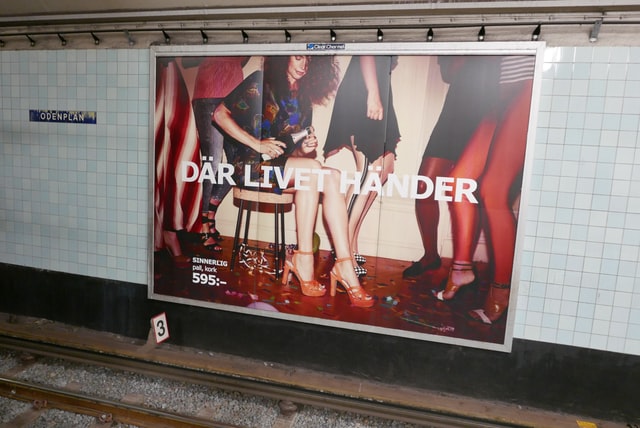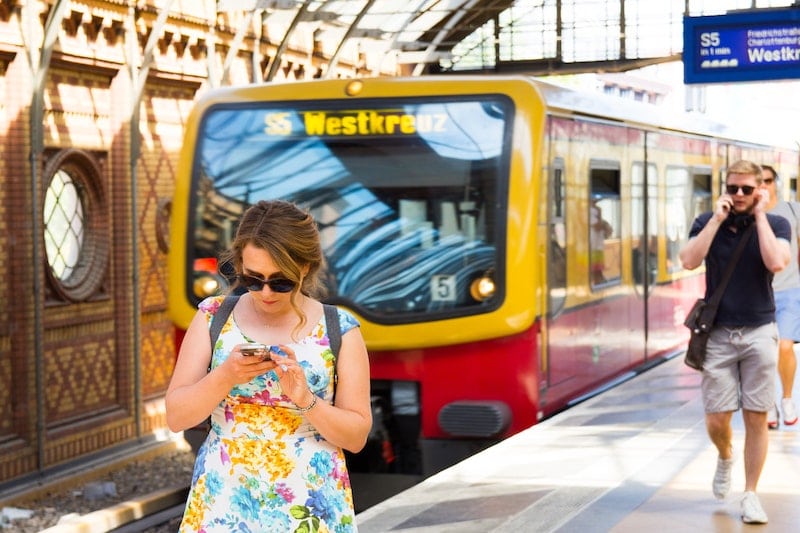Localized marketing in Europe is one of the most effective ways to build trust and connection with the extremely varied audiences across the continent. That’s why many of the world’s most successful brands like Netflix, Airbnb and Slack invest heavily in it.
Discover why mastering multilingual localization isn’t just an option but a necessity in the European market. Keep reading for more insights into how to perfect multilingual localization in Europe.
See also: Localization strategy: Your guide to engaging a global audience
Why is localized marketing in Europe so important?
There are 44 countries in Europe, 24 official languages—more than 200 spoken ones—and over 740 million Europeans spread across the continent. While there are many similarities that unite the European population, the differences are even more pronounced.
Language is the most obvious distinction, but there are also differences in cultures, geographies and frames of reference. So, when it comes to content marketing in Europe, adapting your messages to different local audiences, languages and cultural nuances are key.
When you speak to your customers in their own language, you’re showing them that you truly understand their needs. That’s why 76% of consumers prefer to buy products in their native language.
It’s also important to remember that marketing localization isn’t a copy and paste process; it’s understanding the local nuances that draw in an audience. And it’s sharing the right content at the right time, said in the right way.
See also: 6 effective international marketing strategies by top brands
If you’re entering a new European market, download our practical worksheet to ensure your brand’s content strategy resonates with your target audience:

5 top tips for multilingual marketing in Europe from the pros
Localizing content for every European market you’re in requires a lot of effort—and budget. But if you’ve strategically decided to grow your audience in a given region, experts agree that localization is definitely worth the investment.
Here are five top tips for localized marketing in Europe, plus key examples from global brands.
1. Tailor your message for each market
Localization is so much more than translation. It’s about adapting your content for each market you’re trying to reach and speaking to your audiences in a culturally relevant and relatable way.
For example, audiences in Spain and the US may interpret the meaning of your message in different ways and relate better to different types of content. A Thanksgiving Day campaign in the US wouldn’t be relevant to a Spanish audience. You’ll need to either adapt the marketing campaign for Spain by featuring a Spanish holiday instead, or just completely redo it.
Learn about 9 key differences between content marketing in Spain vs. the US
Not all content makes sense for all regions. Make sure to consult with someone on the ground who understands what type of content works there—and what doesn’t. This way, you can avoid spending your resources on localization when it isn’t effective.
“Father’s Day, for example, is super relevant in Austria, but not so relevant in Germany.”
– Adriana Carles, head of content and social media at Ladenzeile
Pro tip: Work with local community managers and translators in each region you’re operating in.

Example of localized messages done right:
Communications platform Slack is a great example of localizing language and cultural references to reach users worldwide. Apart from localizing the app itself, they’ve also tailored their welcome messages with witty remarks, anecdotes and references to familiar regional idioms. Here are some examples:


Read Slack’s article on how they localize and why it’s so important
As Evgeni Hristov, Netherlands-based marketing and communications manager at Tradin Organic, said in one of our very first podcast interviews:
“Marketing in Europe means tailoring our messages. We can’t convince people to believe in what we’re doing in the same way in different countries.”
Check out our guide to building successful relationships with local community managers.
2. Tap into local influencers
People buy from brands they trust. And a great way to get potential customers to trust your brand is by getting someone they trust to recommend you, which is where local influencers, also known as nano influencers, come in.
69% of brands stated nano influencers had boosted their consumer engagement. You can go hyper-local with your marketing by tapping into local influencers—targeting a super niche, geographically relevant audience.
Local influencers can also connect with their audience authentically and convincingly by using the right lingo. And, since they already know what content resonates with their audience, there’s less work for you to do!
Livia Gonçalves, Netherlands-based global marketing manager at Scotch & Soda, explains the benefits of using local influencers most simply:
“You need to understand who you’re talking to. That’s why influencers are so effective, because they’re speaking to their very own local audience.”
Discover 9 influencer marketing strategies used by the pros
VeraContent client example
UGC-style content is another great way to get relatable content you can share directly from your brand accounts. This involves working with locally-based professional content creators but allowing them a certain level of “free reign” to create content from the heart.
We follow this strategy when producing content for the money transfer app Ria Money Transfer. The brand’s TikTok strategy includes one global account but targets multiple regional audiences using local content creators from each of its key markets.
We’ve sourced content creators from the Philippines, Chile, Morocco and other key regions representing the target market Ria wants to reach. We then provide them with a detailed brief of what content to create, including a script—encouraging them to add in a local flair—brand guidelines, do’s and don’ts, how to shoot the video and the format we’re looking for.
While all local content creators create the content in English, they do so in their local accent—making the content more representative of the brand’s global audience. Ria’s main focus is on sharing the experience of living abroad instead of selling their product directly on TikTok.
See below an example of a video from one of the local content creators:
@riamoneytransfer What do you call it in your country 🍿? #popcorn #crispetas #latam
♬ Mia – Yailin La Mas Viral
Check out our work sample!
3. Tell relevant stories
There are so many benefits to storytelling in marketing. But it only works if you’re telling the right stories that are actually relevant to your audience. Localized marketing in Europe involves telling local stories.
As Bertrand Serrano, France-based marketing manager at Danone, said in our interview:
“You don’t speak to people in Russia like you would to people in Brazil. Everything has to be adapted to local markets, from the content to the channels.”
The whole point of storytelling is to engage customers on a personal level. That’s why L’Oréal has separate Instagram accounts for its global audience and Spanish audience. As you can see, everything from the bio to the links and posts is completely adapted.
Check them out to see how different they are:


Here are 5 ways to ensure a quality localization – even if you don’t speak the language
“A global story is just a global story—it’s the local nuances and hooks that draw in the audience. You have to include all the special details for your country to make it work better.”
– Juan Feal, Spain-based EMEA paid media director at LEWIS Global Communications
VeraContent client example
At VeraContent, we’re dedicated to crafting compelling, localized content for diverse European audiences. A prime example of our work is our collaboration with IE University. We regularly produce and translate articles in both English and Spanish, covering a broad spectrum of topics tailored for international students.
This involves immersive engagement, such as attending IE events, conducting thorough research on the university’s numerous programs and initiatives and interviewing faculty, guest speakers and students.
One of our ongoing initiatives includes generating content for the IE Center for Health and Well-being. Our contributions are designed to assist students, staff and alumni in making the most of their university life.
Recently, we developed a piece that aligns with their monthly theme of “Authentic Connections.” This article delves into the significance of community at university and offers practical advice on forging meaningful relationships and enhancing the relevance and impact of our storytelling under the overarching strategy of localizing content for European contexts.

4. Consider the level of localization necessary
The basis of your communication needs to be clear and the same everywhere, but sometimes you need to have specific local adaptations in Europe.
Alexandra Hinz, Switzerland-based senior social media manager at Victorinox, gave us a great example in our interview. She compared the levels of multilingual localization needed in France and Germany, saying that you could share an English video in Germany, and you’ll likely be fine. But in France, you’ll definitely need a French translation.
Learn why localization is key to US vs. German marketing content
There are also different aspects of your marketing in Europe that may require more localization than others. Sharon Cronin, Ireland-based marketing manager at Schneider Electric, for example, feels strongly about localizing every aspect of your website, down to the footer:
“I think your website should absolutely be localized to wherever you’re targeting because there’s no point in people going to a global site and not seeing content that’s relevant for them. They want to see that you know their market, and also their pain points and problems.”
See also: How to localize your website and why it matters

5. Use the right imagery
It’s important to remember that localizing your content means more than just the written copy. Images tell as much of a story as written text and should also be specific to each market.
Anne-Sophie Delafosse, UK-based localization manager at Deliveroo, spoke about using different images on their app homepage for each region. For example, in the UK, they have an image of a taco which resonates really well there, but in France it’s a no go. Similarly in Italy, they were going to use an image of a pizza on an email header. But it was a very US-style pizza, and their local marketers told them straight: “No, we can’t use that pizza!”
“Images tell a story, and they can tell a different story in different European markets—you need to make them resonate with your users. You have to find the right images and make sure that your audience sees themselves in those images.”
You’ll also find completely different images, promos and content on Deliveroo’s regional social media accounts. See, for example, the different types of images used on their France and Spain regional Instagram accounts:


See also: Multilingual graphic design: Why it pays to hire specialists
Localize your content to truly connect with European audiences
Localized marketing in Europe is the best way to grow your market share in the region. Not only does it help you extend your reach, but it’s the best way to build trust and connection with your audience.
It’s not enough to simply translate your current content. You need a solid European marketing strategy that dives into understanding each market and capturing the unique essence of each region that you’re in. This involves tailoring your message, tapping into local influencers, telling relevant stories, being thoughtful about your imagery and understanding the levels of localization needed.
As a multilingual content agency, we’re experts in adapting content for different European audiences. We’ve built a global team of translators, writers and marketing experts to help your brand succeed across the continent.
If you need help tailoring your brand’s content marketing and social media operations in Europe, we can help.
Book a call with our team for a Free Content Consultation.

